Abstract
This report extends research on Al-induced changes in membrane behavior of intact root cortex cells of Northern red oak (Quercus rubra). Membrane permeability was determined by the plasmometric method for individual intact cells at temperatures from 2 or 4 to 35°C. Al (0.37 millimolar) significantly increased membrane permeability to urea and monoethyl urea and decreased permeability to water. Al significantly altered the activation energy required to transport water (+32%), urea (+9%), and monoethyl urea (−7%) across cell membranes. Above 9°C, Al increased the lipid partiality of the cell membranes; below 7°C, Al decreased it. Al narrowed by 6°C the temperature range over which plasmolysis occurred without membrane damage. These changes in membrane behavior are explainable if Al reduces membrane lipid fluidity and kink frequency and increases packing density and the occurrence of straight lipid chains.
Full text
PDF
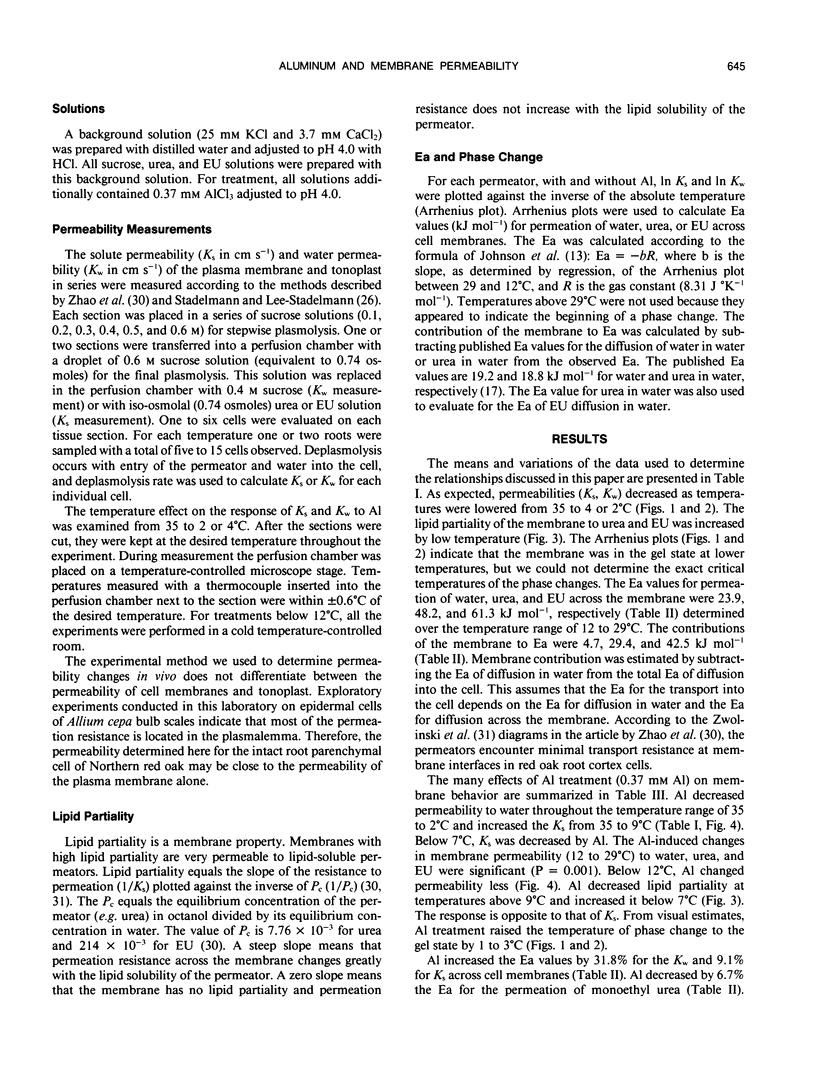
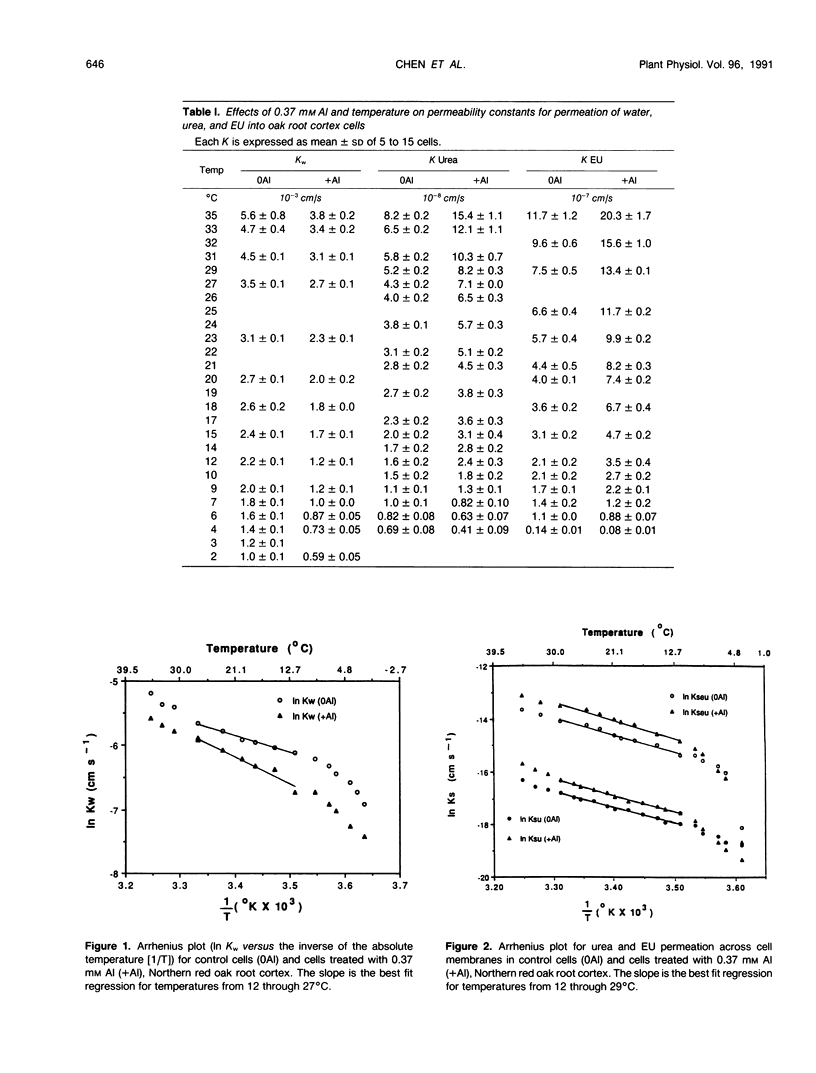
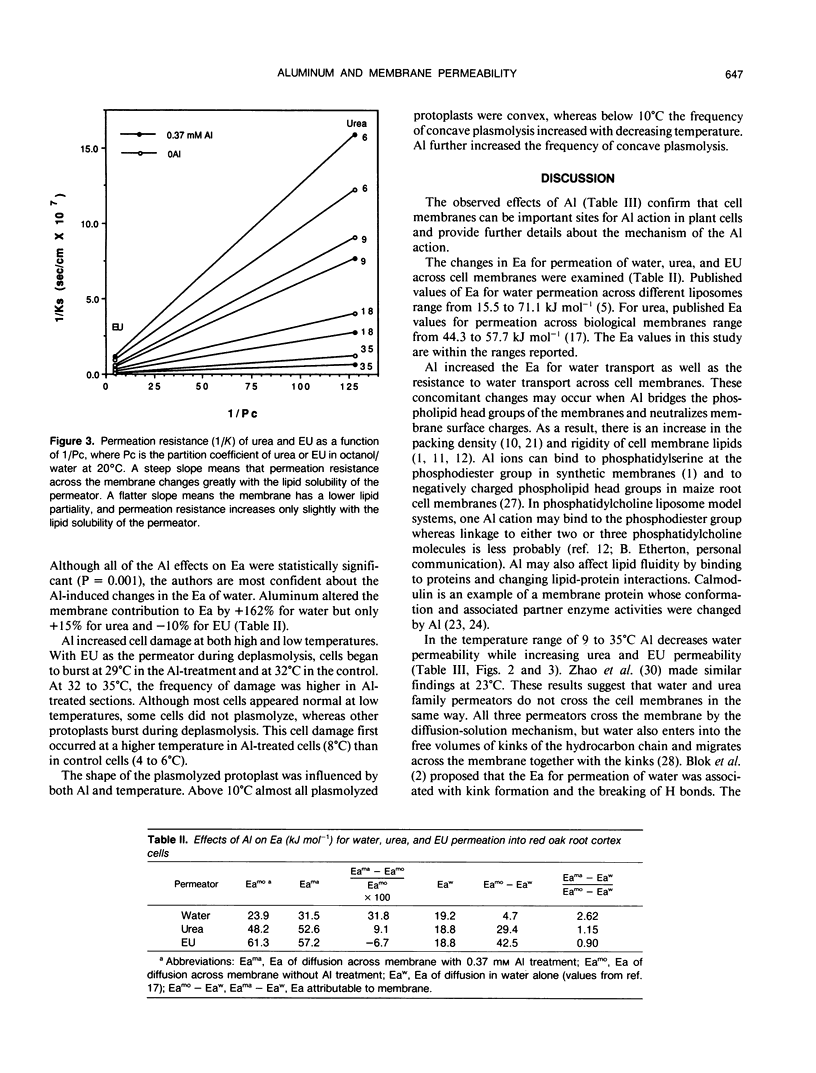
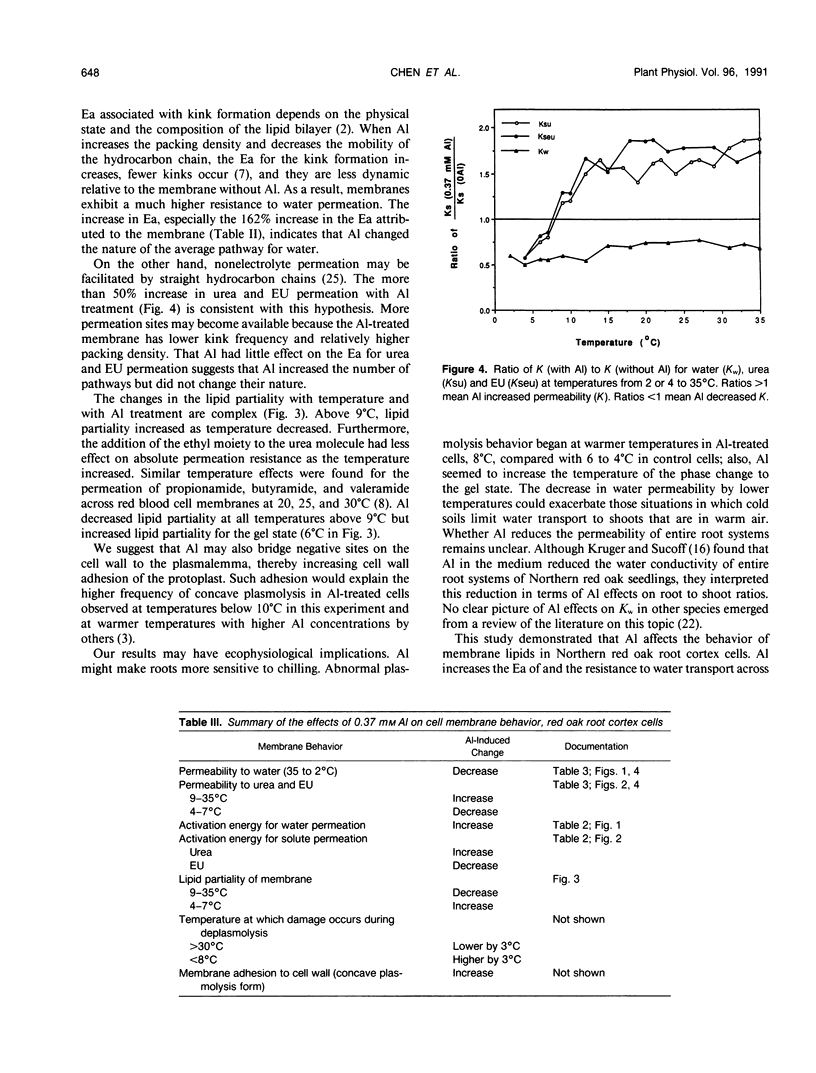
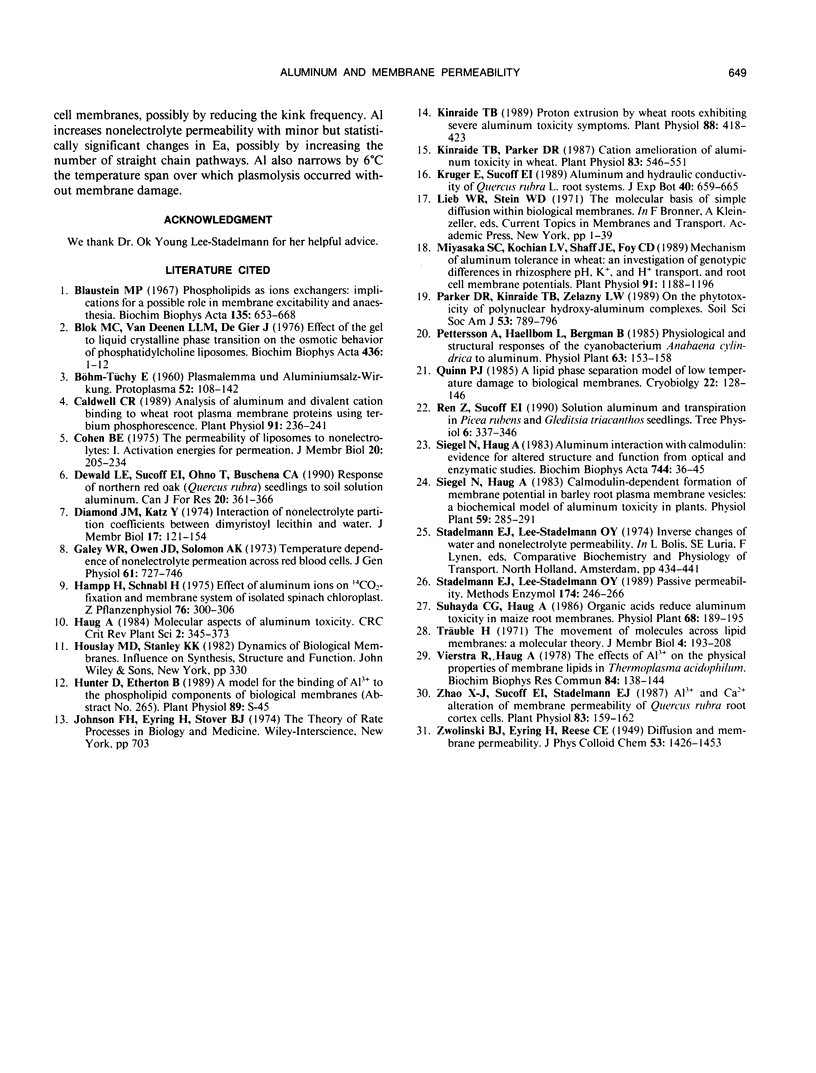
Selected References
These references are in PubMed. This may not be the complete list of references from this article.
- Blaustein M. P. Phospholipids as ion exchangers: implications for a possible role in biological membrane excitability and anesthesia. Biochim Biophys Acta. 1967 Sep 9;135(4):653–668. doi: 10.1016/0005-2736(67)90096-x. [DOI] [PubMed] [Google Scholar]
- Blok M. C., van Deenen L. L., De Gier J. Effect of the gel to liquid crystalline phase transition on the osmotic behaviour of phosphatidylcholine liposomes. Biochim Biophys Acta. 1976 Apr 16;433(1):1–12. doi: 10.1016/0005-2736(76)90172-3. [DOI] [PubMed] [Google Scholar]
- Caldwell C. R. Analysis of aluminum and divalent cation binding to wheat root plasma membrane proteins using terbium phosphorescence. Plant Physiol. 1989 Sep;91(1):233–241. doi: 10.1104/pp.91.1.233. [DOI] [PMC free article] [PubMed] [Google Scholar]
- Cohen B. E. The permeability of liposomes to nonelectrolytes. I. Activation energies for permeation. J Membr Biol. 1975;20(3-4):205–234. doi: 10.1007/BF01870637. [DOI] [PubMed] [Google Scholar]
- Diamond J. M., Katz Y. Interpretation of nonelectrolyte partition coefficients between dimyristoyl lecithin and water. J Membr Biol. 1974;17(2):121–154. doi: 10.1007/BF01870176. [DOI] [PubMed] [Google Scholar]
- Fett W. F., Dunn M. F. Exopolysaccharides Produced by Phytopathogenic Pseudomonas syringae Pathovars in Infected Leaves of Susceptible Hosts. Plant Physiol. 1989 Jan;89(1):5–9. doi: 10.1104/pp.89.1.5. [DOI] [PMC free article] [PubMed] [Google Scholar]
- Galey W. R., Owen J. D., Solomon A. K. Temperature dependence of nonelectrolyte permeation across red cell membranes. J Gen Physiol. 1973 Jun;61(6):727–746. doi: 10.1085/jgp.61.6.727. [DOI] [PMC free article] [PubMed] [Google Scholar]
- Kinraide T. B., Parker D. R. Cation amelioration of aluminum toxicity in wheat. Plant Physiol. 1987 Mar;83(3):546–551. doi: 10.1104/pp.83.3.546. [DOI] [PMC free article] [PubMed] [Google Scholar]
- Kinraide T. B. Proton extrusion by wheat roots exhibiting severe aluminum toxicity symptoms. Plant Physiol. 1988 Oct;88(2):418–423. doi: 10.1104/pp.88.2.418. [DOI] [PMC free article] [PubMed] [Google Scholar]
- Miyasaka S. C., Kochian L. V., Shaff J. E., Foy C. D. Mechanisms of Aluminum Tolerance in Wheat : An Investigation of Genotypic Differences in Rhizosphere pH, K, and H Transport, and Root-Cell Membrane Potentials. Plant Physiol. 1989 Nov;91(3):1188–1196. doi: 10.1104/pp.91.3.1188. [DOI] [PMC free article] [PubMed] [Google Scholar]
- Quinn P. J. A lipid-phase separation model of low-temperature damage to biological membranes. Cryobiology. 1985 Apr;22(2):128–146. doi: 10.1016/0011-2240(85)90167-1. [DOI] [PubMed] [Google Scholar]
- Ren Z., Sucoff E. I. Solution aluminum and transpiration in Picea rubens and Gleditsia triacanthos seedlings. Tree Physiol. 1990 Sep;6(3):337–346. doi: 10.1093/treephys/6.3.337. [DOI] [PubMed] [Google Scholar]
- Siegel N., Haug A. Aluminum interaction with calmodulin. Evidence for altered structure and function from optical and enzymatic studies. Biochim Biophys Acta. 1983 Apr 14;744(1):36–45. doi: 10.1016/0167-4838(83)90337-0. [DOI] [PubMed] [Google Scholar]
- Vierstra R., Haug A. The effect of A13+ on the physical properties of membrane lipids in Thermoplasma acidophilum. Biochem Biophys Res Commun. 1978 Sep 14;84(1):138–143. doi: 10.1016/0006-291x(78)90274-7. [DOI] [PubMed] [Google Scholar]
- Zhao X. J., Sucoff E., Stadelmann E. J. Al and Ca Alteration of Membrane Permeability of Quercus rubra Root Cortex Cells. Plant Physiol. 1987 Jan;83(1):159–162. doi: 10.1104/pp.83.1.159. [DOI] [PMC free article] [PubMed] [Google Scholar]


